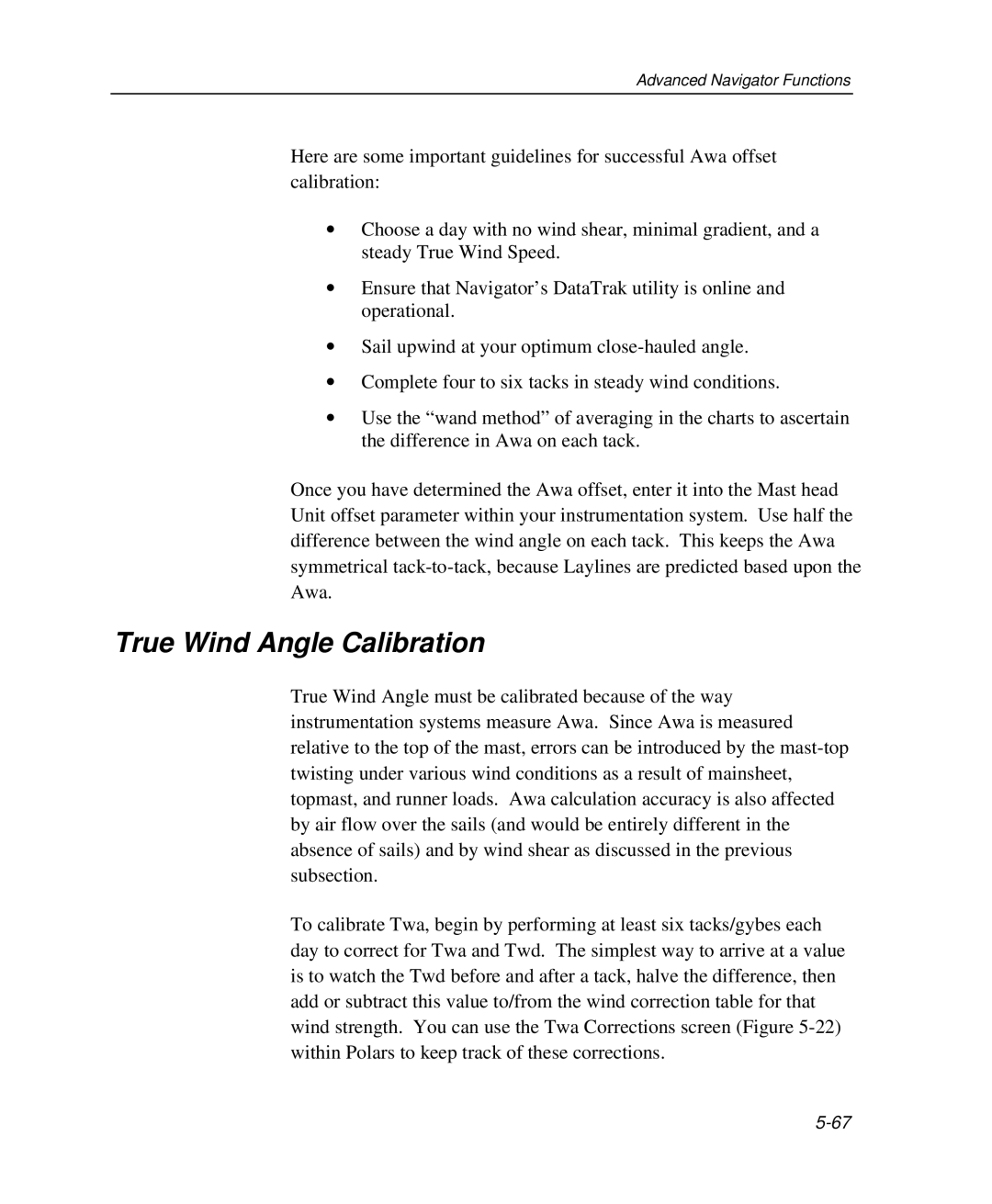Advanced Navigator Functions
Here are some important guidelines for successful Awa offset calibration:
∙Choose a day with no wind shear, minimal gradient, and a steady True Wind Speed.
∙Ensure that Navigator’s DataTrak utility is online and operational.
∙Sail upwind at your optimum
∙Complete four to six tacks in steady wind conditions.
∙Use the “wand method” of averaging in the charts to ascertain the difference in Awa on each tack.
Once you have determined the Awa offset, enter it into the Mast head Unit offset parameter within your instrumentation system. Use half the difference between the wind angle on each tack. This keeps the Awa symmetrical
True Wind Angle Calibration
True Wind Angle must be calibrated because of the way instrumentation systems measure Awa. Since Awa is measured relative to the top of the mast, errors can be introduced by the
To calibrate Twa, begin by performing at least six tacks/gybes each day to correct for Twa and Twd. The simplest way to arrive at a value is to watch the Twd before and after a tack, halve the difference, then add or subtract this value to/from the wind correction table for that wind strength. You can use the Twa Corrections screen (Figure
